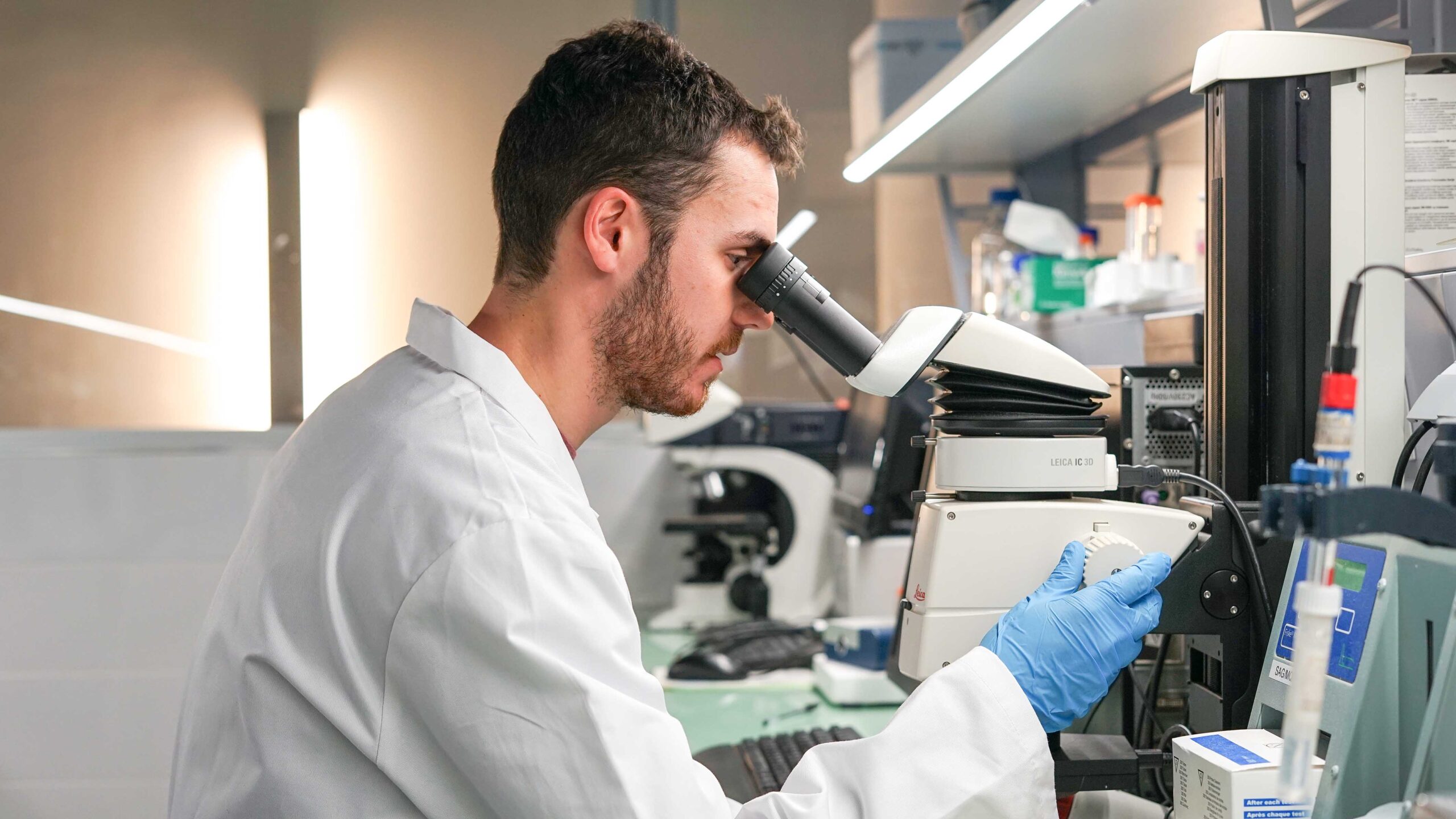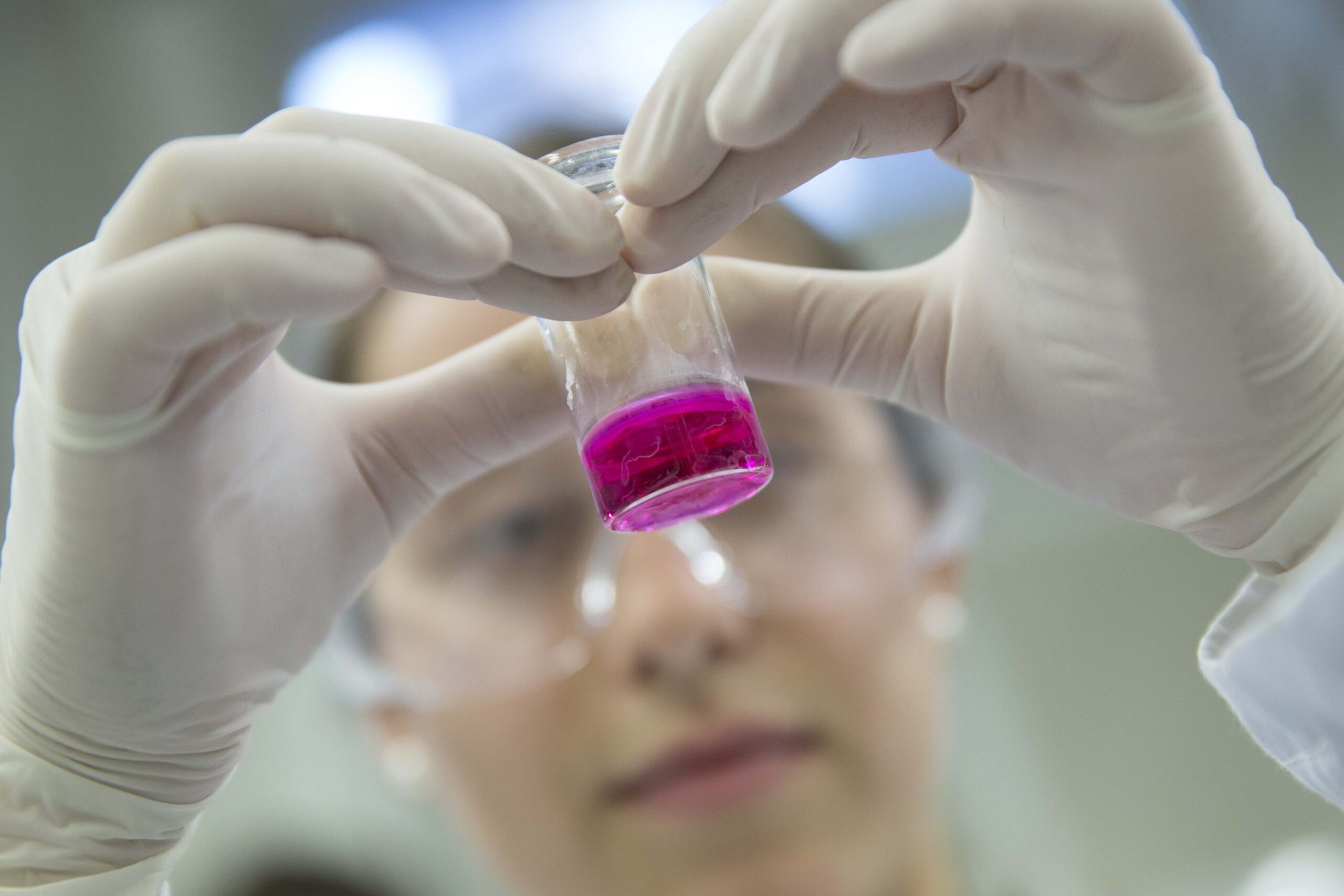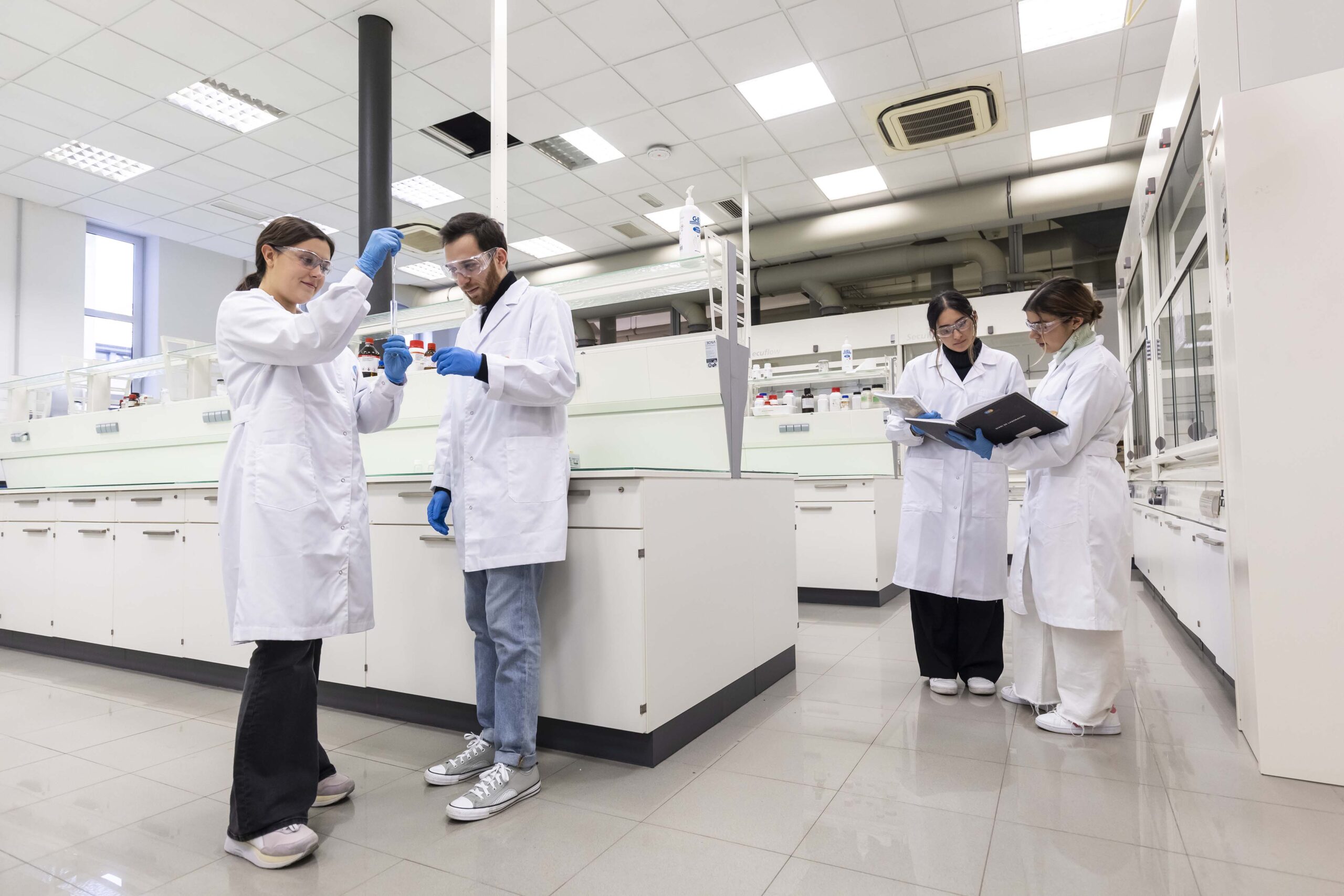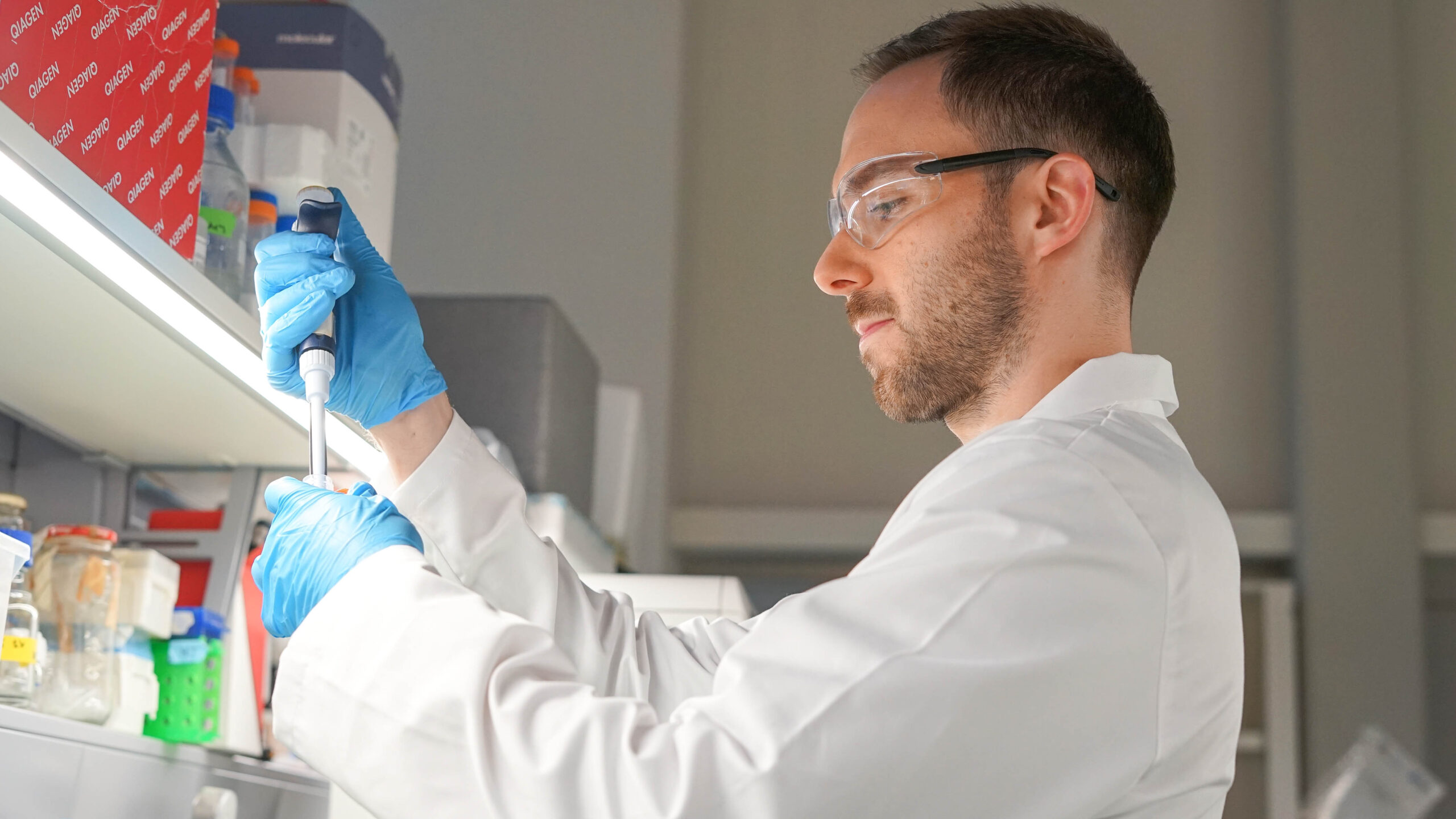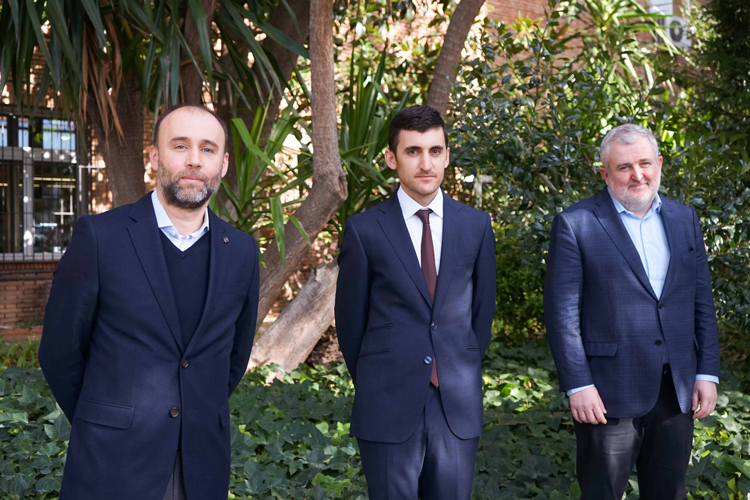The doctoral thesis recently defended by Dr Mario López is focused on dual therapies for the treatment of cardiovascular and antimicrobial diseases, based on the administration of nitric oxide, introduced in polymeric vectors of pBAE.

Dr Mario López between his thesis supervisors, Dr Víctor Ramos and Dr Salvador Borrós.
The translation of RNA technology into clinical practice is producing great expectations although complexities related to administration and biodistribution are limiting its use as a therapeutic tool: RNA technologies require vectors to allow their distribution, internalization, and, ultimately, the alteration of protein expression.
The use of synthetic vectors has several advantages including versatility, scalability, and reproducibility. Among the families of polymeric vectors are poly (β-aminoesters) (pBAE), a family of polymers specifically developed to form complexes with nucleic acids in the form of stable nanoparticles to degrade and facilitate endosomal escape.
Although RNAs have great therapeutic potential, the treatment of complex multistage diseases generally requires a multifactorial approach to improve clinical outcomes. Nitric oxide (NO) has a profound effect on epithelial biology and is therefore a solid candidate for the development of dual therapies with great potential to improve the results of therapies applied to complex diseases.
Within this context, Dr Mario López Moya recently defended his doctoral thesis entitled "Local delivery strategies for nitric oxide and gene therapy delivery," conducted in the IQS School of Engineering Materials Engineering Research Group (GEMAT), co-supervised by Dr Víctor Ramos and Dr Salvador Borrós.
This research was conducted in collaboration with Dr Wladimiro Jiménez's IDIBAPS Group at the Hospital Clínic de Barcelona.
Local nitric oxide administration and applications
In his thesis, Dr López first managed to introduce nitric oxide in the polymeric vectors of pBAE by adding organic nitrates and thionitrites. The pBAE nanoparticles containing organic nitrates are stable and efficient, while exhibiting vasodilator effects in vivo. Moreover, thionitrites as nitric oxide releasing groups show a faster and more direct release pattern and limited toxicity.
In addition to the NO release mechanisms, this research has validated the viability of the polymers used, taking into account their biodegradability and biocompatibility, the stability of the nanoparticles, the absence of toxicity, and the vascular effects of the nanoparticles.
From this point, two routes for applications were tested in specific therapies: in antimicrobial treatments and in cardiovascular diseases. For the first route, the coating of stents for airways (the trachea) was successfully tested. This technology resulted in obtaining a promising decrease in bacterial colonization on the surface of these devices. Regarding cardiovascular disease, there were treatment trials for atherosclerosis and myocardial infarctions.
Quite similar results were also obtained in dermal applications, where dermal vasodilator and antimicrobial effects have been observed in preclinical models and in clinical trials.
As a conclusion, this thesis showed that local treatments combined with a new family of polymers based on pBAE, with integrated capabilities to administer nitric oxide, can be a useful tool to treat cardiovascular and epidermal diseases. Moreover, an additional family of polymers containing nitric oxide was successfully applied in antimicrobial treatments.
This thesis has been financed by an FI doctoral grant from AGAUR (Government of Catalonia), the Ministry of Science and Universities, and the National R&D&I Plan aimed at Societal Challenges.

